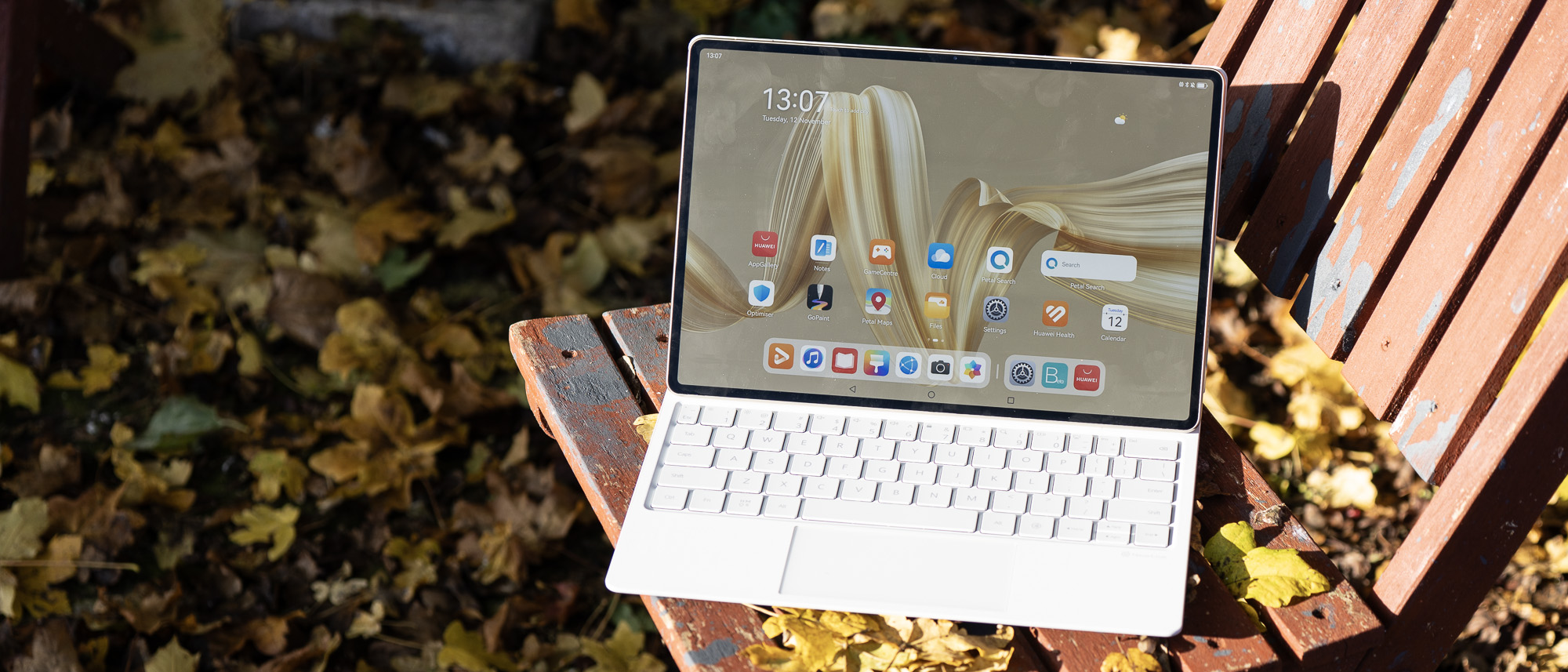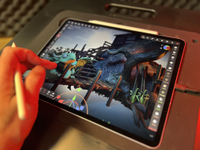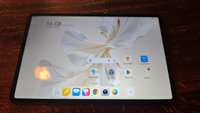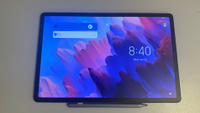Our Verdict
Tablets with ‘pro’ in the name need to be careful, because the M4 version of the iPad Pro has that particular market well and truly cornered. Step things down a bit in your power expectations, and the Huawei MatePad Pro is a pretty good performer, its Papermatte OLED screen offering a bright and colourful experience that’s largely free from reflections (though attractive to fingermarks) and with keyboard and stylus accessories that turn it into a kind of Android-powered laptop.
For
- Excellent matte-coated OLED screen
- Keyboard case and stylus work well
- Reasonable software selection
Against
- HarmonyOS still has a few issues
- Screen picks up fingerprints easily
- Keyboard case a bit awkward
Why you can trust Creative Bloq
Huawei’s Papermatte screens are some of the best we’ve seen in an Android tablet, and the MatePad Pro doesn’t disappoint, placing an OLED panel behind the anti-reflection coating for a best-of-both worlds combination that cuts reflections while remaining colourful and bright.
While this is a more expensive tablet than the similar MatePad 12X, it’s also lighter and slightly more powerful, and can come bundled with a keyboard case and stylus, both of which work instantly.
The tablet’s main problem is its software offering, which while good for the basics requires a few hoops to be jumped through if you have a favourite Google Play app that’s not on the Huawei app store.
Huawei MatePad Pro: Key specifications
| Chipset: | Kirin T91 |
| Memory: | 12GB RAM |
| Storage: | 256/512GB SSD |
| Operating system: | HarmonyOS 4.2 (Android 12) |
| Screen: | 12.2in, 2800x1840 Tandem OLED |
| Rear cameras: | 13MP wide, 8MP ultrawide |
| Front camera: | Unspecified |
| Connectivity: | Nearlink, Wi-Fi 6, Bluetooth 5.2, USB 3.1 Type-C |
| Battery: | 5000mAh |
| Dimensions: | 183x271x5mm |
| Weight: | 508g |
Design & build
If you’re used to handling a tablet, the weight of the MatePad Pro can come as a surprise. It’s lighter than you think it’s going to be, something that comes down to a couple of design decisions. One is the OLED screen - these can be thinner and lighter than multi-layered LCD designs - and the other is the battery. By running a smaller battery at a higher voltage, Huawei claims to get extra capacity out of it. It has a thin profile with rounded edges, and while you’ll definitely notice it’s there, it’s easy to slip into a bag.
Connect it up to its matching Glide keyboard case, which snaps on with magnets and connects using Huawei’s new Nearlink protocol, which detects and pairs with the case as soon as it’s placed within it. It’s a little awkward to use, and we much preferred the case for the MatePad 12X, as not only do you find yourself trying to open the wrong side (the logo is on its rear), but the magnet needs to pop into exactly the right position or it will fold over again.
There's an optional stylus too, the third-gen M-Pencil, which charges by sliding into a slot in the keyboard case from where it can easily be dislodged. There are spare tips in the box for it, however, and it claims an impressive pressure sensitivity level with over 10,000 levels.
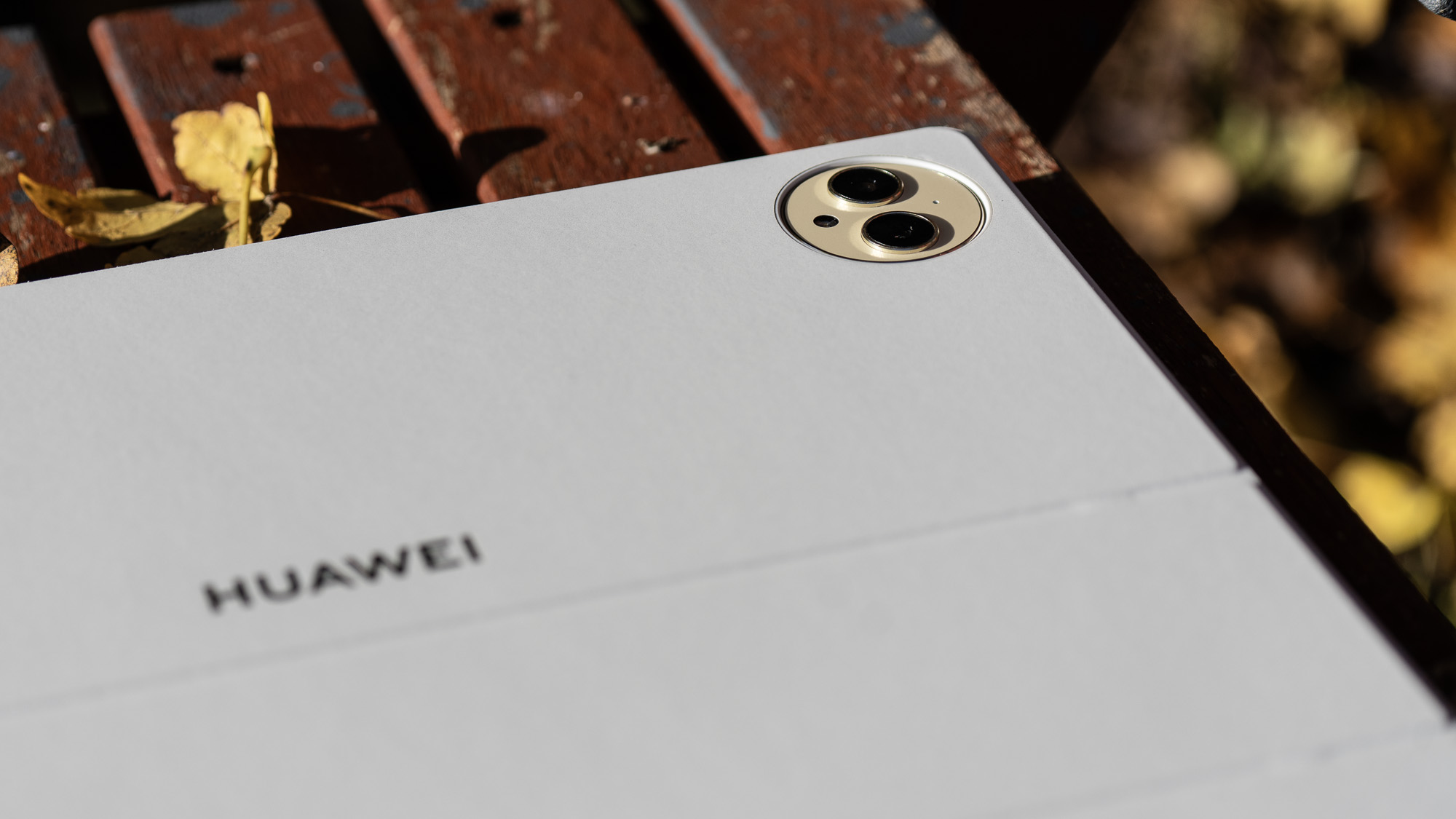
The keyboard case includes a touchpad, an unusual thing to see on a touchscreen tablet accessory, and this enables both a pointer on-screen just like a laptop and the use of swipe gestures on the pad itself. It makes office apps (MS Office 365 is on the Huawei app store, and if you can install Google Play then other suites are available too) much more usable as you don’t have to keep reaching out to touch the screen.
The buttons are in the places Apple likes to put them, with screen lock at the top and the volume rocker at the side. You’ll want to put the tablet on silent right away, as it makes an obnoxiously loud noise on startup (after updates, for example) even with the volume slider on its lowest, which may be less than ideal if you have the option to update overnight switched on.
Features & performance
The Kirin T91 is an eight-core chipset that’s strangely anonymous, with little information about it available online. We do know it’s using the Arm-A510 architecture from the Snapdragon 8, in three clusters with a prime core that runs up to 2.19GHz. This, combined with the 12GB of RAM, provides ample performance for most applications and the ability to swap smoothly between them too.
Its Geekbench scores come out slightly faster than the similar Kirin T90 chip in the Huawei MatePad 12X, though as with that processor some of the GPU tests wouldn’t run properly. The PCMark Work 3.0 test wouldn’t run either - this may be thanks to the unusual chipset or because the Google Play Store has to be run in an unorthodox fashion to get the apps onto the Huawei tablet in the first place.
Whatever it is, these were the only apps we tried that displayed this behaviour, though if you’re looking to run 3D games that aren’t natively available you’re more likely to run into trouble.
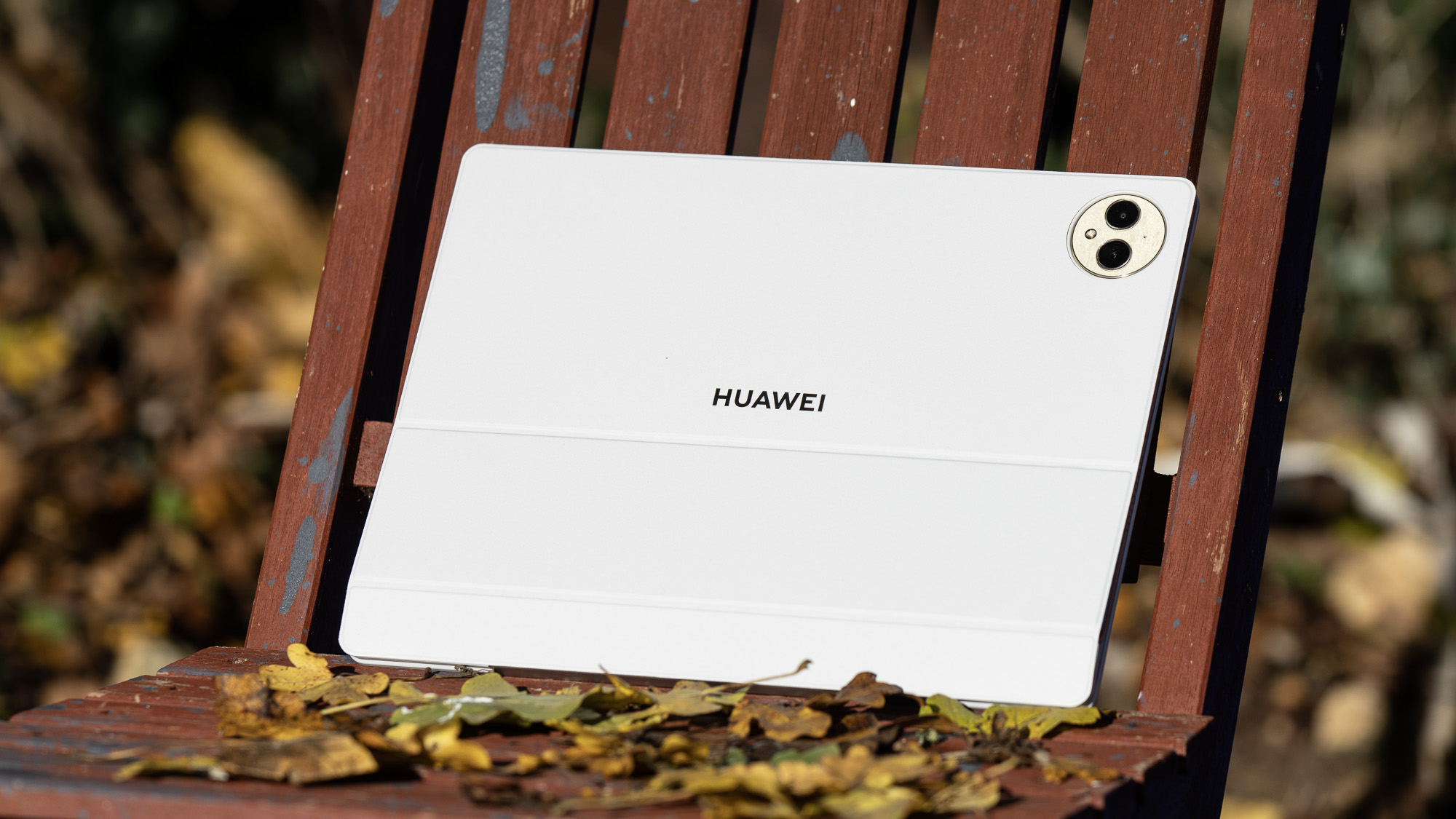
The screen is a dual-layer OLED with Huawei’s anti-reflection Papermatte coating over it, and this makes it an excellent thing to read or draw on. There's a certain graininess to the display if you look closely enough, but the pixel density is high enough for that not to matter much. The screen also picks up fingerprints easily - there's even a cleaning cloth in the box - so being able to keep your sticky paws away from it helps keep the device looking neat.
It’s not an e-ink screen, but it feels smooth under the fingers or the point of the stylus, and Huawei includes a pre-installed painting app, GoPaint, that suggests it’s aimed at those who like to create digital art. You can save your creations as PSD, JPG or PNG files and sync them off the tablet using Huawei’s cloud service if you need to.
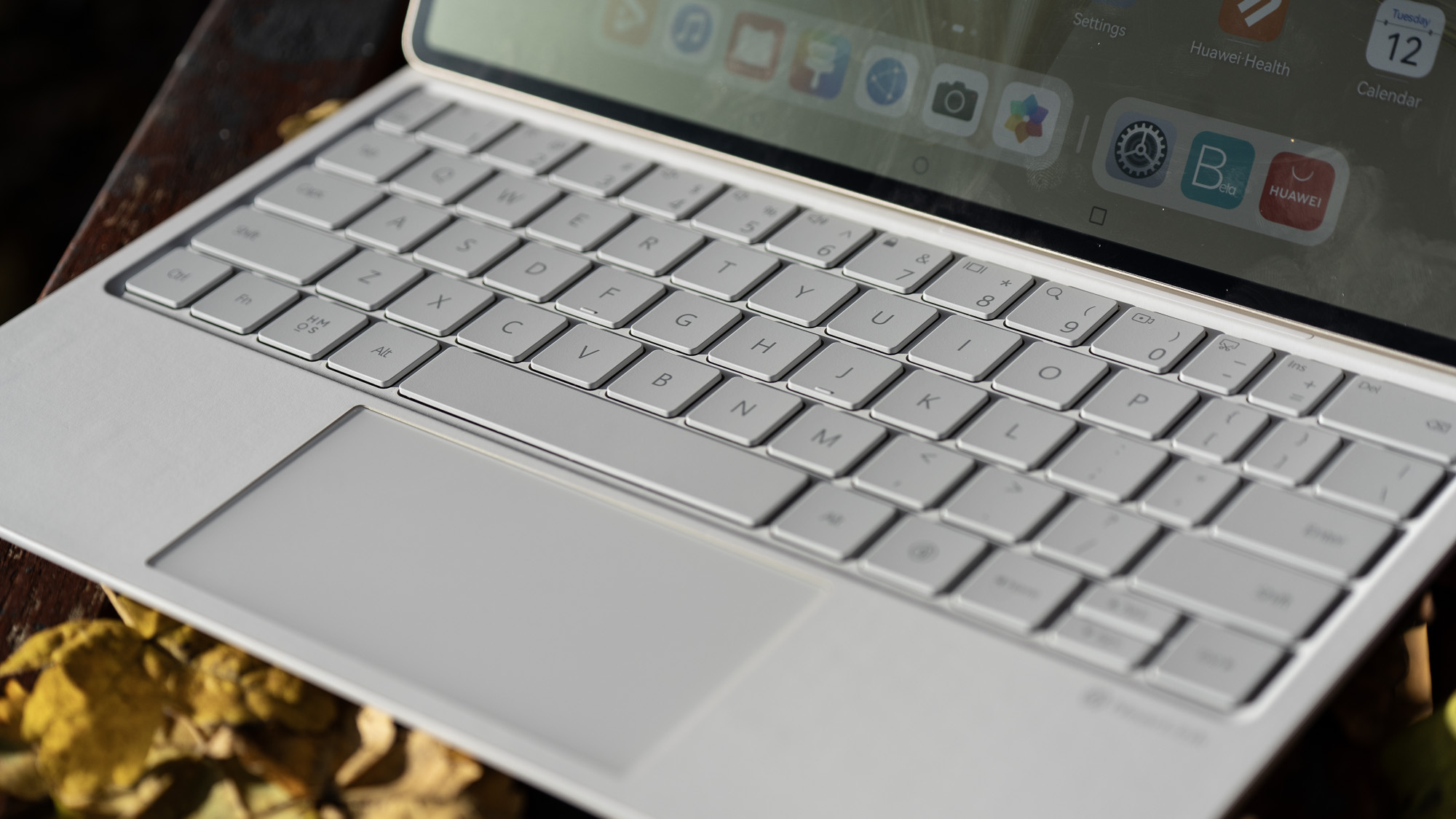
The software is always something worth looking at on Huawei devices, as the Chinese company’s implementation of Android - HarmonyOS - diverges from stock and includes some interesting ideas along with one big issue, the lack of the Google Play Store. There are ways around this, and it’s a lot easier than sideloading apps on something like a Kindle Fire, but if you’re invested in the Google ecosystem then this might not be the Android tablet for you. One thing to watch out for is that, the first time you open the App Gallery (Huawei’s app store), it asks to install a lot of bloatware and other unnecessary apps. Happily, there's a ‘no’ button.
If you have multiple Huawei devices, a phone and a laptop perhaps, then the Superdevice concept allows you to work seamlessly across your kit, using cameras and screens in a fluid way. It’s something we’d like to see more of, though as Apple has shown it helps if your toys are all made by the same company.
Battery life is hard to gauge, as the PCMark test we usually use in the Cupboard of Heck wouldn’t run. The tablet’s internal estimation - 64 hours in performance mode, and 87 with battery saver activated - seems a tiny bit inflated to us, but we had no problems with keeping it going all day, with power left over.
Price
The Huawei MatePad Pro Papermatte retails for £799 on Huawei's online store. You can get an iPad Air, or a OnePlus Tab 2 with a load of accessories, for the price of the MatePad Pro. This high price may be its downfall, as despite the excellent screen, and the easy way its keyboard case and stylus work with the core machine, the sheer number of competing tablets in the same or lower price category will temp potential users away. However, for a hyper-portable laptop replacement with creative potential, it may be worth the price to some.
Who is it for?
If you think you can replace your laptop with a tablet - for streaming, reading, office work and even painting, then the Huawei MatePad Pro is worth a look. The software issues are being resolved, and the MatePad Pro comes with high-quality accessories, so could have broad appeal, especially if the price comes down a bit.
Buy it if...
- You already have Huawei devices
- The matte screen appeals
- You’re not wedded to Google
Don't buy it if...
- There's a specific Android app you want to use
- A budget tablet will do the job
- ...or maybe an iPad Pro
Also consider
The junior iPad is the sweet spot between cost and functionality in Apple’s tablet range.
A budget Android tablet with a big, sharp, bright screen and performance befitting the mid-range.
Lenovo Tab P12 with Matte Display
Slightly cheaper than the MatePad Pro, this matte-coated Android tablet is great for reading or doodling.
The junior iPad is the sweet spot between cost and functionality in Apple’s tablet range
A budget Android tablet with a big, sharp, bright screen and performance befitting the mid-range
Lenovo Tab P12 with Matte Display
Slightly cheaper than the MatePad Pro, this matte-coated Android tablet is great for reading or doodling
out of 10
Tablets with ‘pro’ in the name need to be careful, because the M4 version of the iPad Pro has that particular market well and truly cornered. Step things down a bit in your power expectations, and the Huawei MatePad Pro is a pretty good performer, its Papermatte OLED screen offering a bright and colourful experience that’s largely free from reflections (though attractive to fingermarks) and with keyboard and stylus accessories that turn it into a kind of Android-powered laptop.

Ian Evenden has been a journalist for over 20 years, starting in the days of QuarkXpress 4 and Photoshop 5. He now mainly works in Creative Cloud and Google Docs, but can always find a use for a powerful laptop or two. When not sweating over page layout or photo editing, you can find him peering at the stars or growing vegetables.
